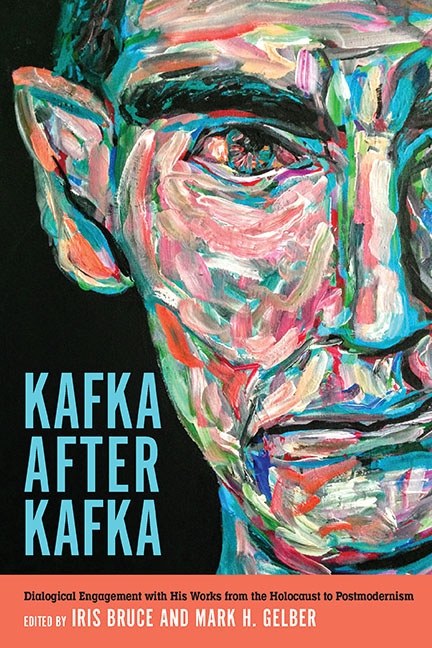Book contents
- Frontmatter
- Contents
- Acknowledgments
- Introduction
- Part I Philosophical and Literary Hermeneutics after the Holocaust
- Part II Kafka in Israeli Cultural Space
- Part III Kafka from Modernism to Postmodernism
- 8 The Beetle and the Butterfly: Nabokov's Lecture on Kafka's The Metamorphosis
- 9 “When the Still Image Projected on the Screen Bursts into Movement”: Cinematic Space-Time in Kafka's “A Country Doctor”
- 10 After the Animal: Kafka, Monstrosity, and the Graphic Novel
- 11 Kafkas after Kafka: Anglophone Poetry and the Image of Kafka
- Notes on the Contributors
- Index
10 - After the Animal: Kafka, Monstrosity, and the Graphic Novel
from Part III - Kafka from Modernism to Postmodernism
Published online by Cambridge University Press: 12 April 2019
- Frontmatter
- Contents
- Acknowledgments
- Introduction
- Part I Philosophical and Literary Hermeneutics after the Holocaust
- Part II Kafka in Israeli Cultural Space
- Part III Kafka from Modernism to Postmodernism
- 8 The Beetle and the Butterfly: Nabokov's Lecture on Kafka's The Metamorphosis
- 9 “When the Still Image Projected on the Screen Bursts into Movement”: Cinematic Space-Time in Kafka's “A Country Doctor”
- 10 After the Animal: Kafka, Monstrosity, and the Graphic Novel
- 11 Kafkas after Kafka: Anglophone Poetry and the Image of Kafka
- Notes on the Contributors
- Index
Summary
INVITED BY THE EDITORS of this volume to reflect on the reappearance and transformation of Kafka's metaphors in a variety of forms, I begin with the metaphor of transformation itself, asking, first, how it will already have undergone radical transformation within Kafka's own body of work, and, second, what implications this radicalization may have for a consideration of texts presumed to come and take after his. I take as my point of departure Kafka's Die Verwandlung, which, for reasons that will soon become apparent, I hesitate to translate simply as The Metamorphosis. I will then look at the graphic-novel adaptation by Eric Corbeyran and Richard Horne, with brief references to works by Peter Kuper and by David Zane Mairowitz and Robert Crumb. Like Vladimir Nabokov, who in his famous lecture on The Metamorphosis went against the author's explicit wish that the main character not be depicted on the cover or anywhere else in the text, the graphic novelists all test their artistic skills by giving visual form to the creature Gregor Samsa will have become.
Why this impulse to visualize, to discount the author's wishes and provide the reader with a concrete image of an eyesore variously described in the text as a monstrous vermin (“ungeheures Ungeziefer”) and an old dung beetle (“alter Mistkäfer”) but also, more objectifyingly, as the junk next door (“das Zeug von nebenan”), more negatively and postzoologically as an un-animal (“Untier”), and more impersonally as the neutral, genderless pronoun it (“es”)?
The impulse to visualize must at least in part be understood as a gesture of domestication. And yet Die Verwandlung is, if nothing else, a scandal of the home or domus, a narrative in which not only the domestic animal, Gregor, or the home of the Samsa family but the very notion of metamorphosis become increasingly unheimlich. As Freud noted in his famous essay, the uncanny (das Unheimliche) cannot simply be opposed to, cannot merely be viewed as the negation of, the Heimliche—of the homey and familiar in the etymological sense but also, less literally, in the all too familiar sense of the covert, clandestine, and secret. Like Poe's purloined letter, das Unheimliche is a secret hidden in the open, a contradiction in terms, a strange familiarity.
- Type
- Chapter
- Information
- Kafka after KafkaDialogic Engagement with his Works from the Holocaust to Postmodernism, pp. 171 - 198Publisher: Boydell & BrewerPrint publication year: 2019

